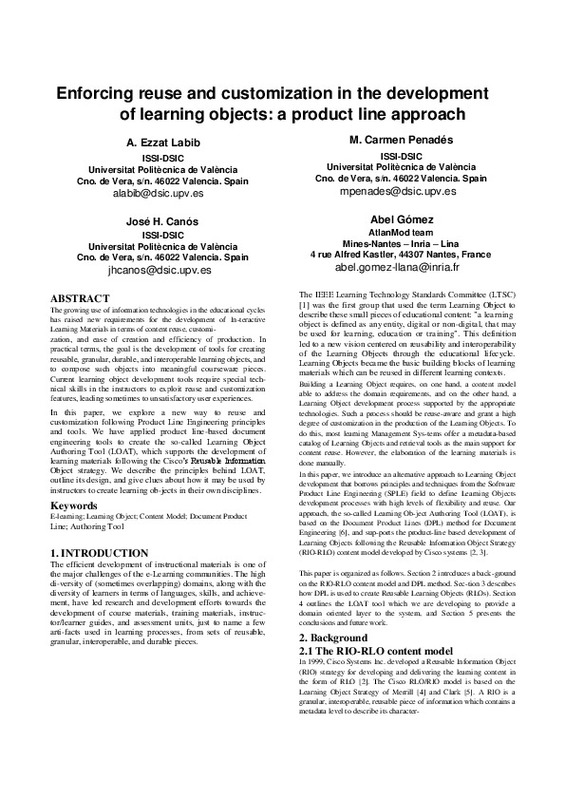JavaScript is disabled for your browser. Some features of this site may not work without it.
Buscar en RiuNet
Listar
Mi cuenta
Estadísticas
Ayuda RiuNet
Admin. UPV
Enforcing reuse and customization in the development of learning objects: a product line approach
Mostrar el registro completo del ítem
Ezzat Labib Awad, A.; Penades Gramage, MC.; Canos Cerda, JH.; Gómez Llana, A. (2015). Enforcing reuse and customization in the development of learning objects: a product line approach. ACM. doi:10.1145/2695664.2695991
Por favor, use este identificador para citar o enlazar este ítem: http://hdl.handle.net/10251/65563
Ficheros en el ítem
Metadatos del ítem
| Título: | Enforcing reuse and customization in the development of learning objects: a product line approach | |
| Autor: | Ezzat Labib Awad, Ahmed Gómez Llana, Abel | |
| Entidad UPV: |
|
|
| Fecha difusión: |
|
|
| Resumen: |
The growing use of information technologies in the educational cycles has raised new requirements for the development of In-teractive Learning Materials in terms of content reuse, customi-zation, and ease of creation and ...[+]
|
|
| Palabras clave: |
|
|
| Derechos de uso: | Reserva de todos los derechos | |
| ISBN: |
|
|
| DOI: |
|
|
| Editorial: |
|
|
| Versión del editor: | http://dl.acm.org/citation.cfm?doid=2695664.2695991 | |
| Título del congreso: |
|
|
| Lugar del congreso: |
|
|
| Fecha congreso: |
|
|
| Código del Proyecto: |
|
|
| Descripción: |
|
|
| Agradecimientos: |
This project has been funded with support from the European Commission. This publication [communication] reflects the views only of the author, and the Commission cannot be held responsible for any use which may be made ...[+]
|
|
| Tipo: |
|






![[Cerrado]](/themes/UPV/images/candado.png)



